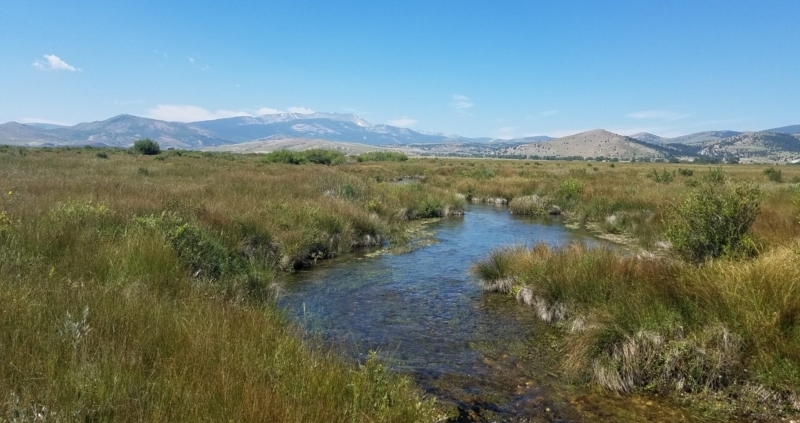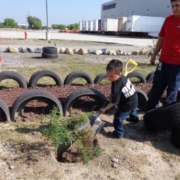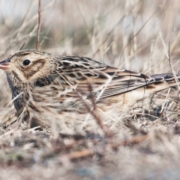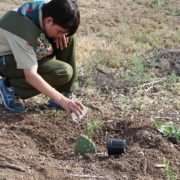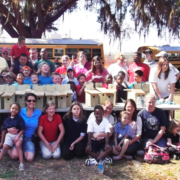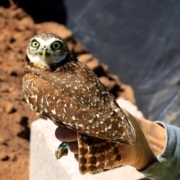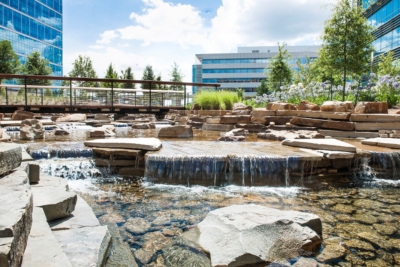Atlantic Richfield | From Superfund to Super Habitat
Engaging in conservation activities on corporate lands sometimes requires managing ongoing impacts of historical uses. For the Atlantic Richfield Dutchman site, located on 3,447 acres in the Upper Clark Fork River Basin of southwestern Montana, a legacy of past mining, smelting and overgrazing resulted in significant impacts to habitats and wildlife.
The Dutchman property is part of the Anaconda Smelter NPL Site, an area of 300 square miles impacted by nearly 100 years of historical copper smelting by the Anaconda Copper Mining Company. High arsenic levels in the soil caused by smelting required remedial action. Additionally, previous use of the property for grazing and breeding livestock had a detrimental impact on the site’s habitat and vegetative cover. Fortunately, Atlantic Richfield (a subsidiary of BP) has overcome the challenges posed by these impacts to transform the Dutchman site into a haven of grassland and wetland habitat used by wildlife and humans alike.
Ecological restoration began at the Dutchman site more than 30 years ago with the creation of a Functionally Effective Wetland Area, now 517 acres and the largest contiguous wetland habitat in the watershed. Through the years, further efforts have been made to address the site’s legacy of impacts, including native seeding, livestock and vehicle exclusion, invasive species management, erosion control and wildlife monitoring.
When describing the efforts Atlantic Richfield has made to exceed both wetland mitigation and remediation requirements on-site, team member Shannon Dunlap, Operations Project Manager, noted that, “What sets the Dutchman site apart is the rigorous monitoring Atlantic Richfield conducts year-round to monitor not only wetlands, but avian and mammal populations, invasive species, grassland vegetation and erosion.”
Field crews work with Go Bird Montana every year to inventory bird populations on-site and have so far observed over 120 species of birds from 35 different taxonomic families. These surveys have found evidence that several rare species and species of concern are breeding on-site. Atlantic Richfield is also investigating ways to implement more comprehensive monitoring that can better guide management efforts, such as the use of remote sensing technology or aerial spectral analysis by drones, or satellites to evaluate vegetative cover.
Not only are bird species thriving, but mammals are as well. Starting in 2008, Atlantic Richfield began restricting vehicle access and installing wildlife-friendly fencing, which restricts cattle access to the site while allowing wildlife to cross safely. These measures have permitted the grassland and wetland vegetation to flourish, benefitting numerous bird and mammal species, including deer and other big game, swallows, sparrows, chickadees, hawks, and waterfowl.
Atlantic Richfield makes a special effort to maintain the property as a public recreation area, offering features such as trails, educational kiosks and bird watching checklists to encourage the visitors to enjoy the site’s natural beauty. Atlantic Richfield also works closely with Montana Fish, Wildlife, and Parks to offer sustainable hunting opportunities to the community, which helps ensure that herds of elk, white-tailed deer, mule deer and moose continue to remain healthy and do not over-browse the habitat. Dunlap articulated that despite the difficulties in allowing public access, “it is a rewarding challenge to balance habitat preservation and public access at the site.”
The Dutchman site demonstrates how with time and commitment, a previously impacted landscape can become a thriving asset to both wildlife and the community.
Related Content
- White Papers:
- Relevant President’s Blog or Wildlife Blog posts
- Project Guidances:
- WHC Webinars:
- What is Monitoring, Why It’s Important and How to Do It Well
- 5 Innovative Approaches to Habitat Regeneration
- We Need a Buffer: Protecting Wetlands by Installing and Monitoring Riparian Buffer Zones
- Wetland Habitats: Identification, Monitoring and Use as Outdoor Classrooms
- Building a Program on Your Remediation Site
Quick Facts
| Site Name: | Dutchman |
|---|---|
| Category: | Member Spotlight |
| Tags: | avian, Awareness and Community Engagement, Education & Awareness, grasslands, invasive species, Mammals, Remediation Member Spotlight, wetlands |
| Site Location: | Butte, Montana |
| Partners: | GoBird Montana, Montana Department of Fish, Wildlife, and Parks, Pioneer Technical Services, U.S. Environmental Protection Agency, U.S. Fish and Wildlife Service, Woodard and Curran |
| Project Types: | Avian, Awareness and Engagement, Education and Awareness, Grasslands, Invasive Species, Mammals, Species Management, Wetlands and Water Bodies |
| Certification Since: | 2019 |
| WHC Index Link: | View Project |
